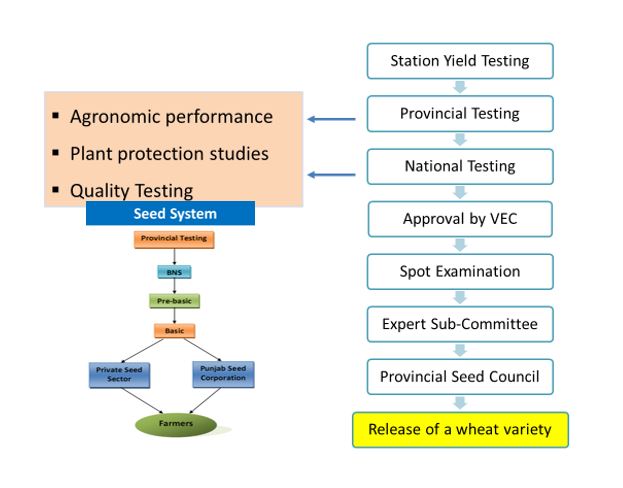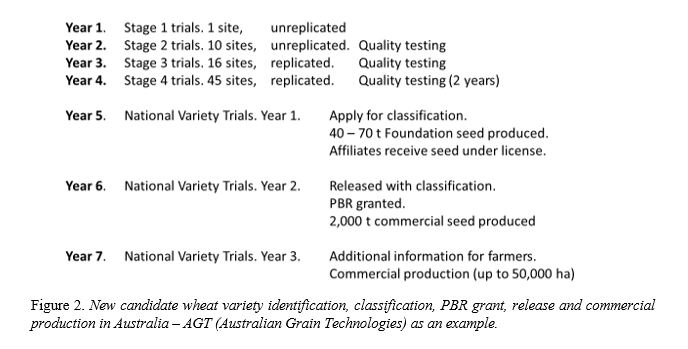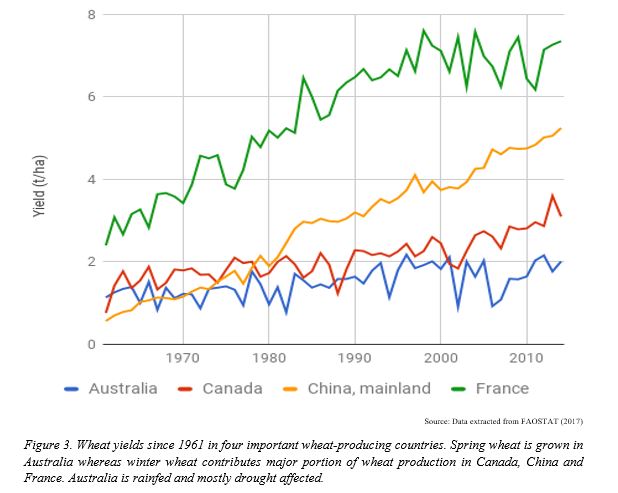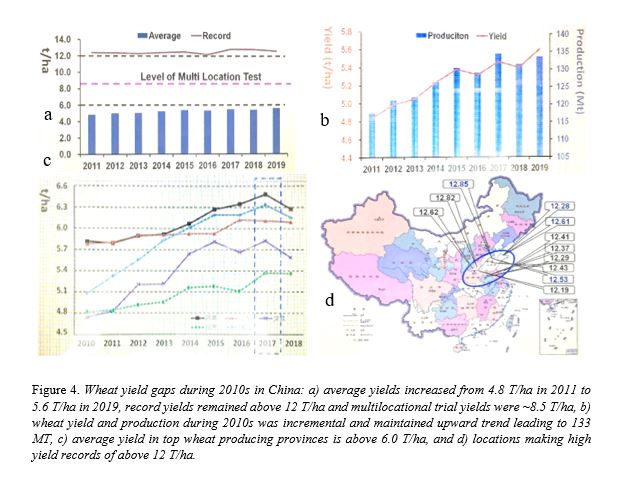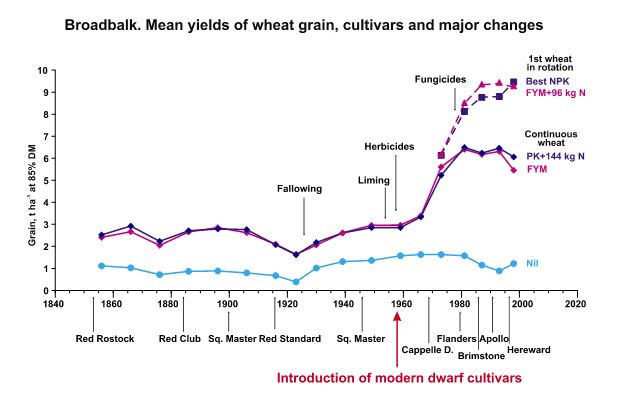PAS Agriculture webinar episode 5 entitled “Wheat Seed Supply Chain Analysis/Policy Brief”
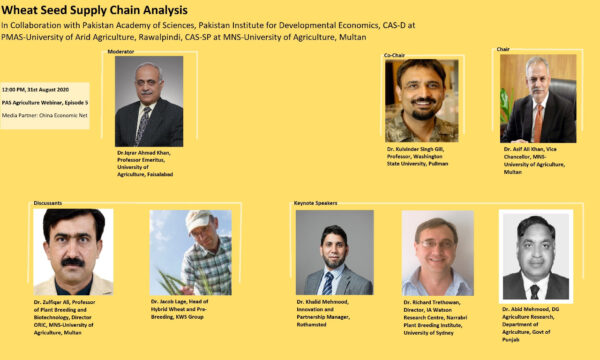
Prof. Dr. Iqrar A. Khan in collaboration with Pakistan Academy of Sciences (PAS), Pakistan Institute for Developmental Economics, CAS-D at PMAS-University of Arid Agriculture, Rawalpindi and CAS-SP at MNS-University of Agriculture, Multan organized a zoom PAS Agriculture webinar episode 5 entitled “Wheat Seed Supply Chain Analysis” on 31st, August 2020 at 12:00 PM PST.
The stagnant wheat yields are significantly attributable to the lack of adaptation of new wheat varieties. While wheat breeding programs have delivered a steady flow of new varieties (HYVs), that has not reached the farmer fields effectively. The quality of the seed sown by the farmer is substandard. There is a consensus that seed with 99% purity and vigor can contribute up to 15% in the yield gains. The Seed Act of 1976 amended in 2015 provides a legal framework for the supply of certified seed to the farmers (GOP, 2015).
Traditionally, home saved seed has dominated the wheat plantings. The green revolution brought in HYVs for which the growers remained interested. There is an instinctive demand for HYVs. However, the farmer remains under served or incapacitated to take advantage of the newly released wheat varieties. Legally, the seed supply chain begins with the approval of a breeder’s variety within the scope of Seed Act. The weaker links in seed supply chain are to be blamed for the lack of delivery of high-quality seed of HYVs to the farmers. Or, that is because of poor extension and outreach. In East Punjab, the Kissan Mela is a biannual feature hosted by the university at district and lower levels where introduction of new seed is known to be the major attraction.
One million tons of wheat seed is required annually. The Government statistics reveal a stock of 0.4 million tons of certified seed available in the system, which is about 40% of the requirement. If delivered and planted, the certified seed can raise national average by 25% of the area sown with certified seed (The difference between the current average of 3.2 MT/ha and demonstrated yields with certified seed of 4.0 MT/ha).
This webinar was designed as a continuation of Episode #1 on genetics of wheat. The aim is to learn from the experiences of world’s major wheat producers where yields are nearly double the yields in Pakistan. There were 166 participants from 7 countries, logged in for two hours in the session chaired by the Vice Chancellor Asif Ali, MNS University of Agriculture, Multan.
The opening remarks were delivered by Dr. Kulvinder Gill (WSU-Pullman, USA) who is a staunch supporter of developing seed supply chain for the small farmers. He thinks the newly released varieties do not have a Charisma to attract the farmers in the way that happened during early days of the green revolution. He is also critical of the lack of resilience to stripe rust disease (break down). And, most of the newly released varieties are not exceptionally higher yielding. Dr. Gill offered to collaborate in fortifying the available varieties with durable stripe rust resistance genes, the critical element in the development of new varieties due to the emerging new strains of rust disease. Introduction of durable rust resistance would allow for a slow release of new varieties, allowing breeders to make robust selection for traits other than rust resistance. Further, in his opinion, seed processing plants are critical to provide high quality seed and for seed business that can easily contribute 5-10% to the yield.
Dr. Abid Mahmood, DG AARI, Faisalabad explained the variety release process in Pakistan as enshrined in the Seed Act 1976 (GOP, 1976). According to the flow chart (Figure 1), there is a clear definition of roles and responsibilities within the public sector. The categories of seeds at different multifaction stages (Breeder, Basic/Pre-Basic, Foundation, certified etc.) are also defined with ‘certified seed’ being the end product to be delivered to the farmer. The breeders are responsible to get an approval from the Seed Council (DUS-Distinct, Uniform, Stable and VCU-Value for Cultivation and Use). A germplasm/variety can be registered at DUS stage. Systematic field trials are carried out to determine VCU. The Punjab/Sindh Seed Corporations are public entities responsible for the multiplication and supply of certified seed. There is significant space for the private sector to multiply the certified seed for sale. Dr. Mahmood mentioned that there is experimental evidence to prove that the certified seed offers 20% yield gains when compared to the home saved non-descript seed. He also shared purity standard of wheat seed certification (Table 1)
Figure 1. Wheat seed supply system in Pakistan: 1) Varietal approval and release process starts from initial testing by breeder at the station. Breeders contribute to provincial and national VCU trials, DUS trials and disease testing trials conducted by Provincial Agriculture Department, National Coordinator Wheat PARC, FSCRD and Crop Diseases Research Institute NARC, respectively. Variety Evaluation Committee assesses the data and approves the candidate variety. The candidate variety is examined on spot by expert teams and presented to Technical Expert Sub-Committee for recommendations to Provincial Seed Council for its approval to release the variety. 2) Seed production process includes production of Breeder Nucleus Seed (BNS) and Pre-basic seed by public sector while basic and certified seed by public and private seed companies with the help of registered growers. 3) Public and private seed companies distribute/market the certified seed to the growers which is verified by the inspectors of FSCRD (Federal Seed Certification and Registration Department).
Table 1. Purity standards for certification of Pre-basic, Basic and Certified wheat seeds in Pakistan
Dr. Richard Trethowan, Professor, University of Sydney, Australia made an elaborate presentation on the seed multiplication and supply chain system operated through a licensing scheme. Each and every transaction is documented and proper research cess is charged. New candidate variety identification, testing and release takes seven years (Figure 2). Australian farmers can source seed in two ways – AGT (Australian Grain Technologies: https://www.agtbreeding.com.au/) affiliates and seed sharing systems. AGT affiliates is a network of professional seed growers and processors based in important locations all over Australia producing and distributing the seeds of AGT varieties. In the sharing system, Australian farmers can share seed with other farmers with consent of the breeder through an agreement. Australia grows rain-fed spring wheat, yields 2 T/ha (Figure 3) and produces hard and soft wheat for local and export destinations. A major portion of the produce (80%) is exported. There are high standards of seed supply to the growers to maintain internationally accepted standards of purity. Variety approval system in Australia is similar to Pakistan but field (trials) and lab testing differs in terms that it is done through accredited 3rd parties. He also made a case for Hybrid Wheat for there being sufficient heterosis available in the gene pools. The hybrid offers a quick solution to the variety replacement challenge in the event of any new disease outbreak within 1-2 years which takes several years in the traditional breeding schemes. Hybrid breeding is a robust business model to attract private investment in R&D.
Dr. Jacob Lang, Breeder KWS, a German family owned Seed Company since 1886, explained that the wheat varietal approval and spread in Germany, France and UK is still dominated by OPVs/Pure lines. The approval system is again similar but testing (VCU) is done by British Society of Plant Breeders (BSPB). Once a variety is listed, there are lots of checks and controls to monitor seed production and processing for certification purpose. The average seed replacement in the three major wheat producers in the EU is 50%. The farmers use home saved seed but cannot share with other neighboring farmers. He supported the idea of hybrid varieties and explained his groups interest in continuing work with Pakistan to promote the development and release of hybrid varieties.
Dr. Huijun Guo, Chinese Academy of Agriculture Sciences, Beijing gave a detailed presentation of her mutation breeding program with a potential for changing plant architecture in the future (Green Revolution was a change in plant height). She presented data showing Chinese average of 6.0 T/ha with a demonstrated potential of 12 T/ha (Figure 4). China’s wheat yield increased from 4.8 to above 6.0 T/ha in just 8 years and secured 133 MT wheat grains in 2019. She explained that two models are in place for seed supply, Model I: breeders, seed company and leading farmers produce and supply seed, Model II: breeders transfer rights to seed company. She also thought that the seed replacement could play a key role in achieving the demonstrated potential. In her explanation of the seed supply chain, she emphasized the role of breeders in promoting the multiplication by the seed companies after the approval of the varieties.
Dr. Khalid Mahmood, Innovation Lead, Impact Lab, Rothamsted Research explained the history of wheat improvement due to different interventions deployed for wheat yield improvement in UK (Figure 5). The UK average wheat yield is 8.5 tones/ ha. Rothamsted research is involved in Designing Future Wheat (DFW) program together with JIC, NIAB, Bristol and Nottingham University that is producing Breeder Toolkit which is shared to all breeders in the UK. Seed multiplication and supply system follows EU rules and are similar to Pakistan. Public regulators conduct DUS through NIAB (National Institute of Agricultural Botany, GOV.UK, 2014). The Recommendations list of wheat varieties is published each year by Agri Horticulture Development Board (AHDB) that provides unbiased information to farmers to choose a variety for sowing. Inspection by licensed seed inspectors and use of ICT (image analysis, data loggers and apps etc) helps collect data on uniformity and other important traits in seed certification process to keep the seed supply system transparent.
Provincial Minister Hasnain Dreshak raised a pertinent question, asking the house to find critical elements in the seed supply chain that could be addressed.
Prof. Dr. Asif Ali, Vice Chancellor MNS University of Agriculture Multan, Chair of the Webinar, concluded session with a note of satisfaction. He emphasized on the streamlining of policy to improve seed supply chain. Seed replacement can add upto 20% increase in average yield. Hybrid Wheat shows promise to provide solutions of trait mobilization, seed replacement and entrepreneurship. The efforts of Prof Richard Trethowan and Dr Jacob Lage were acknowledged in helping Pakistani wheat breeders in bringing Bla technology of hybrid wheat production. The offer made by Dr. Kulvinder Gill for breeding durable rust resistance shall be promoted.
Figure 5. History of wheat production interventions in UK – 177 years at wheat experiment Broadbalk: Fallowing was started in 1920s, modern dwarf cultivars were augmented with liming and herbicides in late 1950s and fungicides in late 1970s. Best production practices yields ~10 t/ha, and continuous wheat sowing yield 6-7 t/ha.
The audio/video recording of the event is available at the webpage of PAS www.paspk.org and at the YouTube link: https://youtu.be/WqchVZv4MgI
Wheat variety Faisalabad-2008 still covers significant area under cultivation despite a steady flow of new varieties. That is a trend similar to the past experience of Chenab 70, Pak-81 and Inqilab-91. Either the performance of new varieties is not meeting the farmer’s expectation or the farmer is unaware of any new variety.
The critically analyzed seed supply chain suggests that the system of variety approval in Pakistan is similar to Australia, the UK and China, but ineffective. Though, the protocols of varietal approval are similar but the composition of testing bodies are different. Few innovations in the testing especially VCU trials emphasizing use of technologies like dataloggers, image analyzers, biomolecular markers, apps for data collection and analysis and database of profiles of all varieties were suggested to improve the system. The need of accreditation and audit of existing testing protocols either conducted by public bodies or 3rd party testing agency was highlighted. It was felt that there is need to establish Plant Breeder’s Society in Pakistan which conducts VCU trials like BSPB. Discrepancy handling through representations, duration, renewal and deletion of varieties on the recommended list and frequent revisions in regulatory frameworks were also debated. Seed certification can be more robust and transparent if involvement of accredited seed certifying agencies is initiated, like Seed Services Australia is assisting ASA-Australian Seeds Authority. Deployment of licensed/authorized seed inspectors in addition to official inspectors like in the UK and internal certification/quality management system in the seed companies can improve the quality seed supply. Seed treatment and processing facility constructed at Punjab Seed Corporation is state-of-the-art facility and can be shared with other seed companies. New accredited facilities of seed processing, testing and technology labs can be established in public-private partnership.
As a summary of the event, following pathways were identified as strategic policy outline for improving the wheat seed supply chain:
- The legal framework and philosophy of seed supply chain was found to be similar in all the country papers presented. However, there are operational differences in terms of roles and responsibilities of the regulators, the entrepreneurs/business organizations and professional societies. A lack of third party in variety evaluation and rest of the seed supply chain implementation process needs to be addressed.
- The demand for a good seed is undiminishing. There is no farmer (small or large) who is unfamiliar with the benefits of a new seed/variety. But, the desire for a new seed vanishes due to lack of access and means. The industry driven (flour mills, bakeries, food chains, value addition industry) interventions must be introduced for customization of commercially grown varieties.
- The new varieties are not always an attractive proposition due to a lack of any demonstrated higher value in replacement (cost benefit ratio) or is that a failure of the extension (No Kissan/Seed Mela).
- The hybrid wheat offers a business model while reservations remain. It is being promised that hybrids can offer a yield benefit of upto 20%. Whereas similar benefits are possible by the implementation of current quality seed supply chain as defined in the law. Incentives for seed replacement process through neighbors helping each other is a time tested model.
- The most obvious reason for variety replacement is the breakdown of resistance to stripe rust. New breeding options for a durable rust resistance must be employed to develop resilient varieties. That can also be used to fortify the popular varieties that farmer is familiar with.
- International collaboration for wheat seed improvement is imperative. The application of molecular technique and ICT tools/precision can fast track the availability of quality seed to the farmers.
- Wheat seed processing plants are also needed to be made easily accessible for supporting SME in seed grading and treatments. Creating Seed Champion Farmers with demonstration plots of seed crop and coupled with seed processing units could promote the seed replacement process.
- New accredited seed biotechnologies labs are also needed to be established preferably in public-private partnership.
- The availability of quality seed can strong be a catalyst for mechanization of seeding/drilling and balanced use of fertilizer. It is known that the act of buying better seed inspires the farmer for improving other agronomic practices.
References
GOP. 1976. Seed Act 1976. The Gazette of Pakistan, Government of Pakistan (http://mnfsr.gov.pk/mnfsr/userfiles1/file/FSCRD/Seed%20Act%201976.pdf visited on August 25, 2020).
GOP. 2015. Seed (Amendment) Act 2015. The Gazette of Pakistan, Government of Pakistan (http://www.na.gov.pk/uploads/documents/1438327528_958.pdf visited on August 25, 2020).
GOV.UK. 2015. Protocols and procedures for testing the value for cultivation or use (VCU) of agricultural crops updated 2020 (https://www.gov.uk/guidance/vcu-protocols-and-procedures-for-testing-agricultural-crops visited on August 25, 2020)
GOV.UK. 2014. Protocols and procedures for testing the distinctiveness, uniformity and stability (DUS) of certain agricultural and vegetable plants updated 2020 (https://www.gov.uk/guidance/dus-protocols-for-testing-plant-varieties visited on August 25, 2020).
Acknowledgement: Web services were provided by Mr. Shehzad Ashraf and Mr. Muhammad Naseer. Webinar design, illustrations, announcements, registration, feedback and analysis, and editorial assistance by Mr. Nehal Ahmad Khan.

